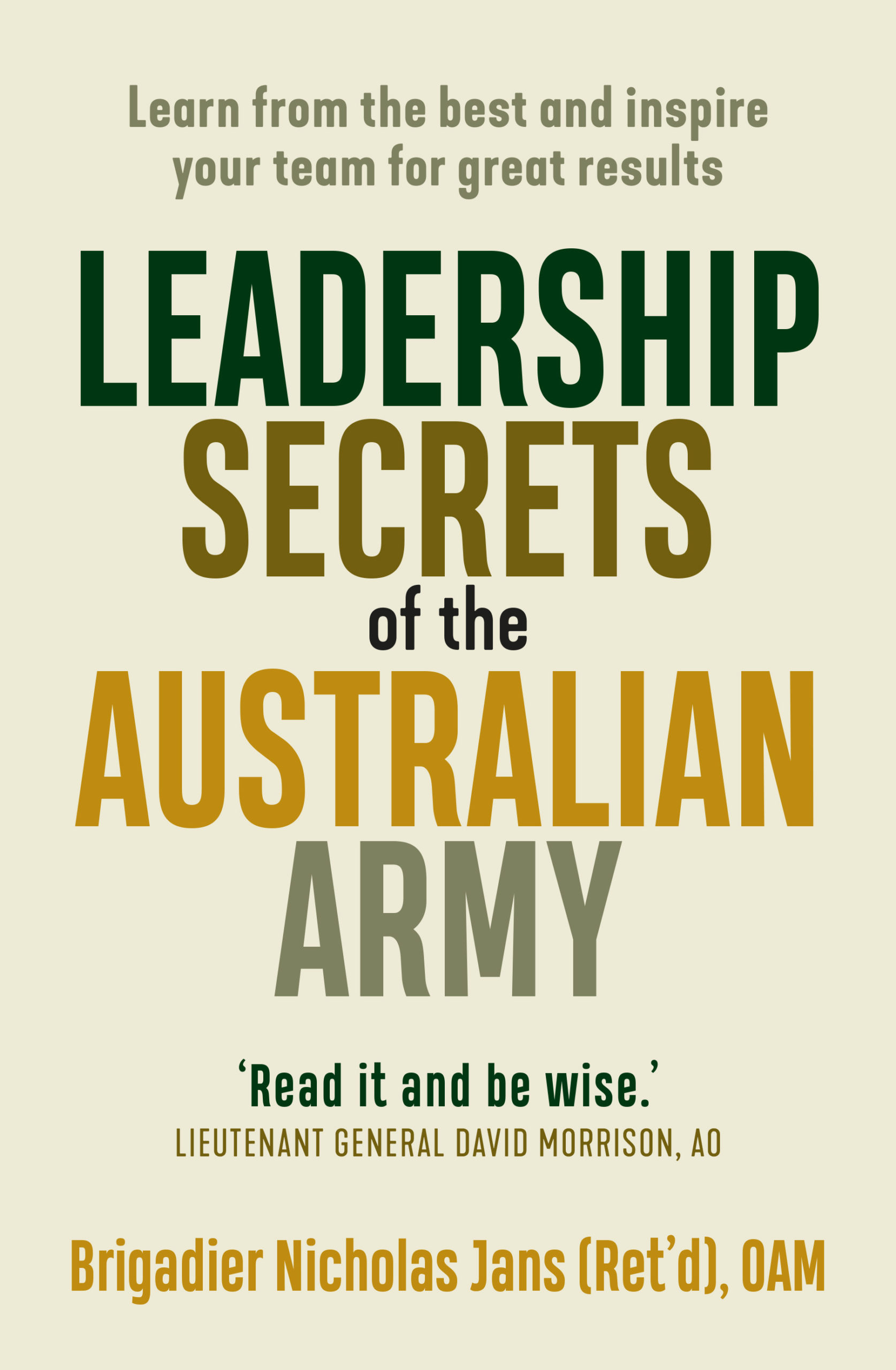One reason I joined the Army was that I saw it as an organisation that was committed to developing the leadership of its people. I wanted a piece of that – both to develop as a leader, and to contribute to the leadership development of others. Army is willing and eager to learn and adapt from the best leadership studies and practices in business and other spheres. I observe that in the work of the Centre for Australian Army Leadership and its Australian Army Leadership Programme (AALP). But I have also seen that Army leadership has principles and frameworks that other spheres can learn from.
Brigadier Nicholas Jans (Ret’d) OAM draws on his experience as an Artillery Officer and Reservist, his observations of military leaders and a research project for this book. Many of his stories are of Army teams and leaders. For example, one of the operational officers quoted is ‘Major Echo’ who deployed to the Middle East to lead a movement control agency. Her team was busy and dispersed, but she asked them to email her the top three issues keeping them up at night. Based on that she developed a blueprint with her operations officer, phoned the team to discuss the implications and made frequent visits. Her philosophy of leadership was: “get in touch with those involved, tap their expertise, show them that their opinions and their actions matter, and keep their focus on the big picture” (p.84).
The author also examines how ex-Army officers drew on their training for exercising leadership in business, political, legal and other spheres. For example, Jeff Kennett, former ex-national serviceman and ex-Premier, describes what he learned from Army service, including the importance of communication, outstanding leadership and management. He said a manager “keeps things ticking along” while a leader takes teams in new directions (p.33). Military leaders have to function at their best with limited resources in an often ‘VUCA’ environment – a context of volatility, uncertainty, complexity and ambiguity. In other words they “must perform at their best on their very worst day” (p.136). This is why they then have much to offer in other contexts too.
The leadership ethos at the core of Army culture, Jans argues, can be explained by the ’3 Rs of leadership’:
- Representing – being a role model who earns trust with character the team can believe in
- Relating – being a supportive manager who builds self-belief and team spirit
- Running the team – being an engaging catalyst who is satisfying as well as productive to work with.
Jans identifies some distinctively Australian cultural elements: fair-dinkum leadership, egalitarianism, no-BS culture and independent-mindedness which allows a tendency to question orders and make own bottom-up suggestions.
He explains and shows how some of Army’s leadership tools or ‘secrets’ work in military and other settings:
- Military Appreciation Process (MAP)- including allowing sufficient time initially to decide the goal
- Mission Command – the principle of delegation to the lowest possible level with the freedom and resources to tackle objectives toward an overall plan
- Back-briefing – where a subordinate communicates back what is expected and what is happening
- Seeking 360-degree performance feedback
- After-Activity Review (AAR) to foster reflective practice
- Communicating using SMEAC (outlining the Situation, Mission, Execution, Administration and Logistics, and Command and Communications)
I also appreciated reading some of the practices that Officers said they use, including:
- Identifying some aspect of basic soldiering to be good at and doing it with your diggers
- Telling Lieutenants that if they don’t make mistakes they aren’t trying enough
- Being on time and dressing well
- Prioritising relationships in networks, including not emailing when you can call, and not calling when you can meet
- Keeping a ‘GOYA’ sign in your office to remind leaders to ‘Get Off Your Arse’ and spend time with soldiers in their workplace, barracks and field activities.
A key model for Army leaders is servant leadership, whereby the focus is more on supporting others than satisfying one’s own needs (this is why officers is eat last). The language leaders adopt is to focus on ‘we and us’ over ‘I and you’. The priority becomes ‘Mission-team-me’.
One officer explained they focused their first and best energy on the people in their teams, including seeking to do most of their own administrative paperwork after hours because “my work time belongs to my people” (p.49). Leaders also need to model a balanced approach to work and recreation and not suggest that everyone has to ‘overclock’ to perform satisfactorily. Empowering and resourcing team members as priority is commendable.
Leadership Secrets of the Australian Army is a valuable introduction to Army leadership for those who are new to Army, but also for civilians interested in learning from the Army. It would also be interesting for those preparing for a career after Army to reflect on the substantial skillsets they bring from their Army service.
About the Author: Chaplain Darren Cronshaw is a member of the Part-Time Army and serving in 2021 at the 1st Recruit Training Battalion, Kapooka. For civilian work he pastors Auburn Baptist Church and teaches leadership and research methods with the Australian College of Ministries (Sydney College of Divinity).
The views expressed in this article are those of the author and do not necessarily reflect the position of the Australian Army, the Department of Defence or the Australian Government.

